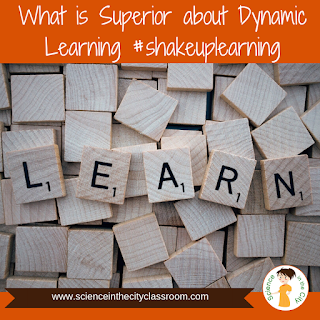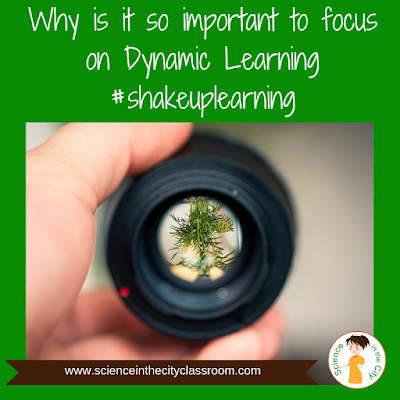What is Superior about Dynamic Learning? #shakeuplearning
Shake up learning calls for learning activities that go beyond one and done activities. Learning can (and perhaps should) break the boundaries of the school day, due dates, and the prescribed curriculum.
This new style of learning and teaching involves the following:
Dynamic Learning is characterized by constant change. It grows and evolves along with the learner collaborating, creating, and communicating to demonstrate progress. It extends beyond the traditional boundaries.
For more information, check out this podcast and this infographic, as well as the website Shake Up Learning.
This new style of learning and teaching involves the following:
Risk-taking
It is important to model risk-taking and teach students to face their fears.- FAIL = first attempt in learning
- This can be taught through modeling, explicit teaching, and asking questions that don’t have just one right answer.
- This can also be reinforced through teaching about famous failures, and those who have overcome a difficulty.
Breaking barriers and bad habits
- Real learning can happen anywhere, anytime, and is driven by interests and curiosity
- Real learning is not one size fits all
- Grades should represent understanding and learning, not compliance
Always learning
- Learning can happen at a variety of times and places, not only in a traditional lesson in the classroom.
- This involves teaching students how to find answers on their own
- How to curate resources
- How to search effectively
- Troubleshooting. When students have difficulty finding something, or you have difficulty with a resource, use this as a teachable moment!
- Learning can be a la carte and publicly available - Pinterest, Instagram, Facebook groups, etc
Sharing your voice/connect
- Don’t be afraid to share your thoughts and your work, as well as your students’ work. This doesn’t mean that you are claiming to be an expert but is a reflection of your learning and your talents.
- Share through Social media, Twitter, blogs and develop a personal learning network
Unleashing creative thinking
- Do not give a formula for an activity
- Use activities that are more open ended
- Authentic learning experiences, out of the box projects that don’t have just one correct answer
Going global - share student work with an authentic audience
- Publish work rather than turn in or build online portfolios
- Use hashtags to find the audience
- Google hangouts and skype
Empowering students
- Learning experiences that are more personalized
- Choices - choose devices/tools/topics/readings/goals, etc… use menus?
- Encourage curiosity
Dynamic Learning is characterized by constant change. It grows and evolves along with the learner collaborating, creating, and communicating to demonstrate progress. It extends beyond the traditional boundaries.
For more information, check out this podcast and this infographic, as well as the website Shake Up Learning.







